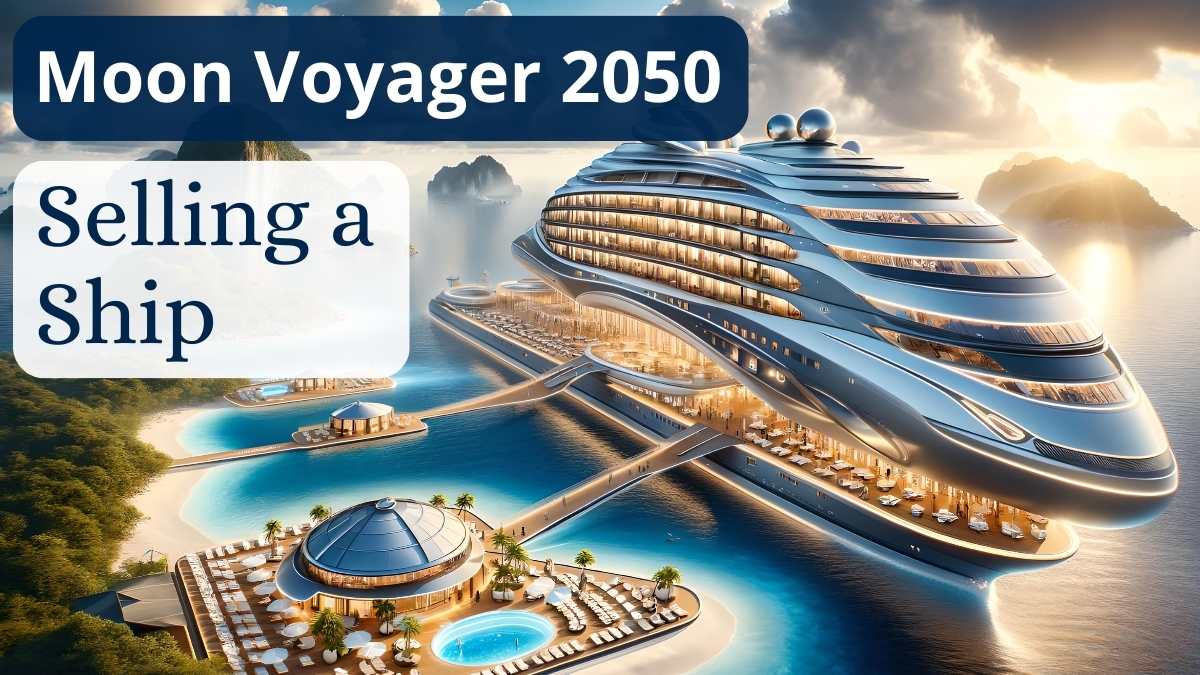The “Moon Voyager 2050,” envisioned as a state-of-the-art ship built in 2050, would likely incorporate advanced technologies and design philosophies that reflect the trends and challenges of its time. Here are some of its key features:
- Sustainable Energy Systems: The Moon Voyager would be powered by a combination of solar panels, advanced battery storage systems, and possibly other renewable energy sources like wind or wave energy. Its design would prioritize energy efficiency, minimizing its carbon footprint.
- Autonomous Navigation: Equipped with sophisticated AI systems, the Moon Voyager would be capable of autonomous navigation, plotting the most efficient courses and adapting in real-time to changing sea conditions, obstacles, and traffic.
- Advanced Hull Design: The hull of the Moon Voyager would be made from advanced composites, offering superior strength and durability while being lightweight. The shape would be optimized for hydrodynamics, reducing drag and improving efficiency.
- Environmental Monitoring Systems: The ship would be equipped with sensors and equipment to monitor ocean health, including water quality, temperature, and marine life activity. This data could be used for research and to minimize the ship’s ecological impact.
- High-Tech Safety Features: Safety would be a top priority, with automated fire suppression systems, advanced life-saving equipment, and emergency response drones. AI-driven safety protocols would constantly assess risks and implement preventative measures.
- Communication and Connectivity: High-speed satellite and quantum communication systems would ensure seamless connectivity for navigation, data transmission, and passenger use, regardless of the ship’s location.
- Luxury and Comfort: If the Moon Voyager is a passenger ship, it would offer luxurious accommodations with advanced amenities like virtual reality entertainment, panoramic viewing decks, and personalized cabin automation for comfort and convenience.
- Modular Design: Parts of the ship could be modular, allowing for easy customization based on the voyage’s purpose—whether it’s for cargo transport, scientific research, or luxury cruising.
- Eco-Friendly Waste Management: The ship would employ zero-waste systems, recycling all waste onboard and using advanced water treatment technologies to prevent ocean pollution.
- Integration with Global Shipping Networks: If used for cargo, the Moon Voyager would be integrated into global logistics networks, using IoT and blockchain for efficient tracking, loading, and unloading operations.
This vision of the Moon Voyager 2050 combines current technological trends with forward-thinking innovation, imagining a ship that is not only advanced in terms of navigation and efficiency but also conscientiously designed to be sustainable and environmentally friendly.

